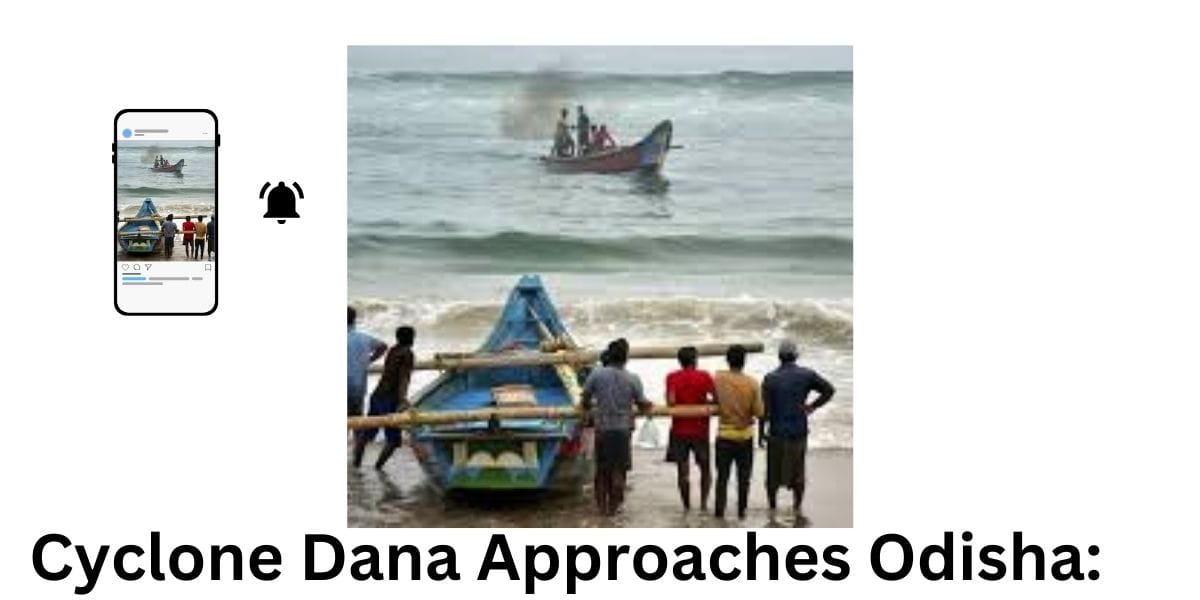Bhubaneswar, October 24, 2024 – As Cyclone Dana barrels toward the Odisha coastline, the state has undertaken one of its largest evacuation efforts in recent history. With landfall expected tonight between Bhitarkanika and Dhamra, authorities have already relocated 10,60,336 people from 14 vulnerable districts to safer cyclone shelters. The state government is on high alert, with Chief Minister Mohan Charan Majhi reassuring citizens that all necessary precautions are in place to mitigate the storm’s impact.
Majhi addressed the media earlier today, urging the public to remain calm. “The state government is fully prepared to tackle whatever situation arises. I urge people not to panic. You are in safe hands. We have been closely monitoring the situation with the help of multiple systems,” he said. His words came after a detailed review of the state’s preparedness in collaboration with various agencies, including the Odisha Disaster Rapid Action Force (ODRAF), the National Disaster Response Force (NDRF), and local authorities.
The Indian Meteorological Department (IMD) has predicted that Cyclone Dana will bring winds reaching speeds of 100 to 120 kmph, accompanied by heavy to very heavy rainfall in several coastal and interior districts. The state’s Revenue and Disaster Management Minister, Suresh Pujari, revealed that more than 3,000 villages in 14 districts along the coastal belt had been identified as particularly vulnerable to the cyclone. “Our primary focus is ensuring the safety of our people. We have been evacuating as many as 10,60,336 individuals from these high-risk areas to cyclone shelters and safer places,” said Pujari.
The coastal districts of Jagatsinghpur, Kendrapara, Bhadrak, and Balasore are expected to face the brunt of the storm. These regions have seen an increase in evacuation activities, with hundreds of shelters being set up to accommodate those displaced by the cyclone. In preparation for possible disruptions, essential supplies such as food, water, and medical assistance have been prepositioned at these shelters. Schools and community centers have been converted into temporary relief camps, providing additional capacity for evacuees.
Meanwhile, the IMD has issued a red alert for several districts in Odisha and neighboring West Bengal, warning of potential flash floods and widespread damage to property. Fishermen have been advised not to venture out into the Bay of Bengal, where rough seas and high tides have already been reported. The IMD also cautioned that the cyclone could trigger storm surges, with seawater expected to inundate low-lying coastal areas.
Efforts are also underway to ensure that power and communication networks remain operational during the storm. Officials have been working with energy companies to reinforce electricity grids in vulnerable areas, while telecommunications providers are preparing to deploy mobile towers and satellite communication units to maintain connectivity if terrestrial networks fail.
The River Traffic Police and Disaster Management Group (DMG) in West Bengal have also been active, issuing warnings along the Hooghly River and other water bodies that could be affected by the storm’s trajectory. Kolkata, which lies to the northeast of the expected landfall zone, is also bracing for heavy rainfall and potential urban flooding over the next 48 hours.
Cyclone Dana is the latest in a series of cyclonic disturbances that have formed over the Bay of Bengal in recent years, a trend that meteorologists attribute to changing climate patterns. Odisha, which lies in the cyclone-prone eastern coast of India, has witnessed a number of severe storms over the past two decades, including Cyclone Fani in 2019, which caused widespread devastation across the state.
In response, the state government has strengthened its disaster preparedness mechanisms, improving early warning systems and developing more robust evacuation strategies. Today’s large-scale evacuation, which has moved over a million people to safety within a short timeframe, is a testament to these efforts.
“Odisha has come a long way in terms of disaster management. We now have better infrastructure, more trained personnel, and quicker response systems in place,” said a senior official from the Odisha State Disaster Management Authority (OSDMA). “However, we must remain vigilant. Cyclones are unpredictable, and the situation can change rapidly. Our focus is on minimizing loss of life and property.”
Cyclone Dana is expected to weaken slightly after making landfall but will still pose significant risks as it moves inland. Heavy rainfall is anticipated across northern Odisha and southern West Bengal, raising concerns about landslides and riverine flooding. The IMD has advised residents in these areas to remain indoors and take necessary precautions.
With all eyes on the cyclone’s progress, local authorities continue to work around the clock to ensure the safety of the population. “We are committed to doing everything in our power to protect the people of Odisha,” said Majhi. “Our teams are on the ground, ready to respond to any emergency that may arise.”
As night falls and Cyclone Dana edges closer to the Odisha coast, the state remains on high alert, with disaster response teams, local administration, and citizens all bracing for the storm’s impact.



